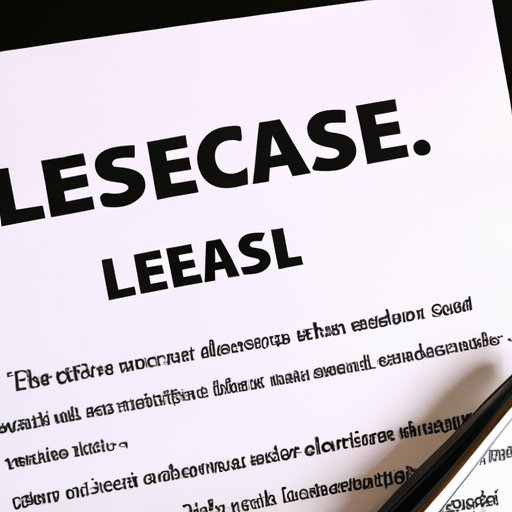
Introduction
Breaking a lease can be a daunting task for tenants. Whether because of a change in job, family issue, or simple dissatisfaction with the rental property, tenants may find themselves seeking a way out of their lease agreement. This article serves as a guide for tenants on what to do to break a lease, understand their lease terms and obligations, review the lease contract, communicate with the landlord, find a replacement tenant or subletting options, negotiate with the landlord, and know their legal rights.
Understanding the lease terms
Before breaking the lease, tenants need to understand the lease terms and legal obligations of both landlords and tenants. Reviewing the lease contract will help tenants determine if breaking it is necessary. Tenants may decide to move out of the rental property for numerous reasons, including job relocation, family emergencies, or dissatisfaction with the rental property.
Review the lease contract
Tenants who want to break their lease must first review the lease contract thoroughly. This will help them understand the clauses in the agreement and determine what they need to do to break it. The lease agreement contains common clauses that address breaking the lease, such as early termination fees, subletting options, and notice periods.
Communicate with the landlord
Tenants should inform their landlord of their intention to break the lease agreement. They should explain the reasons why they want to break it and provide all necessary notices, which may include written and verbal notices. Tenants must comply with the notice period stated in the lease agreement, which is usually between 30 and 60 days depending on the state laws.
Look for a replacement tenant
Tenants who want to break their lease can look for someone to assume their lease agreement. This can help them avoid financial penalties such as losing their deposits or paying rent until the landlord finds a new tenant. The replacement tenant must comply with the landlord’s screening requirements and sign an agreement to assume the lease terms; hence, verifying that the landlord approves of the change.
Check for subletting options
Tenants can also look into subletting options if the lease agreement allows it. If the landlord approves subletting, the tenant will become a sublessor. However, the original lease agreement must be followed, and the sublessee must comply with the screening criteria set by the landlord.
Negotiate
Negotiating with the landlord can be an option to avoid penalties. Tenants can offer to forgo their deposits or pay a reduced fine when breaking their lease. However, tenants must understand that the landlord is not obliged to agree to any negotiations related to the contract, and it is up to the landlord to choose to impose penalties or not.
Know your rights
Tenants breaking a lease must acknowledge their legal rights. The landlord cannot automatically keep the tenant’s security deposit or seek double rent payment. Tenants must ask for an inventory list their landlord expects after they have moved out.Contact the landlord to know the process of receiving your deposit and any repayment plan you might have agreed upon during signing the lease.
Conclusion
Breaking a lease agreement can lead to stress and potential financial loss. However, tenants can make the process smoother by understanding their options and adhering to the lease terms. Tenants can negotiate with their landlord to avoid contract penalties and take necessary action to protect their legal rights and deposit. Communication is essential when breaking a lease, and tenants can maintain formal communication with their landlord during the process.




